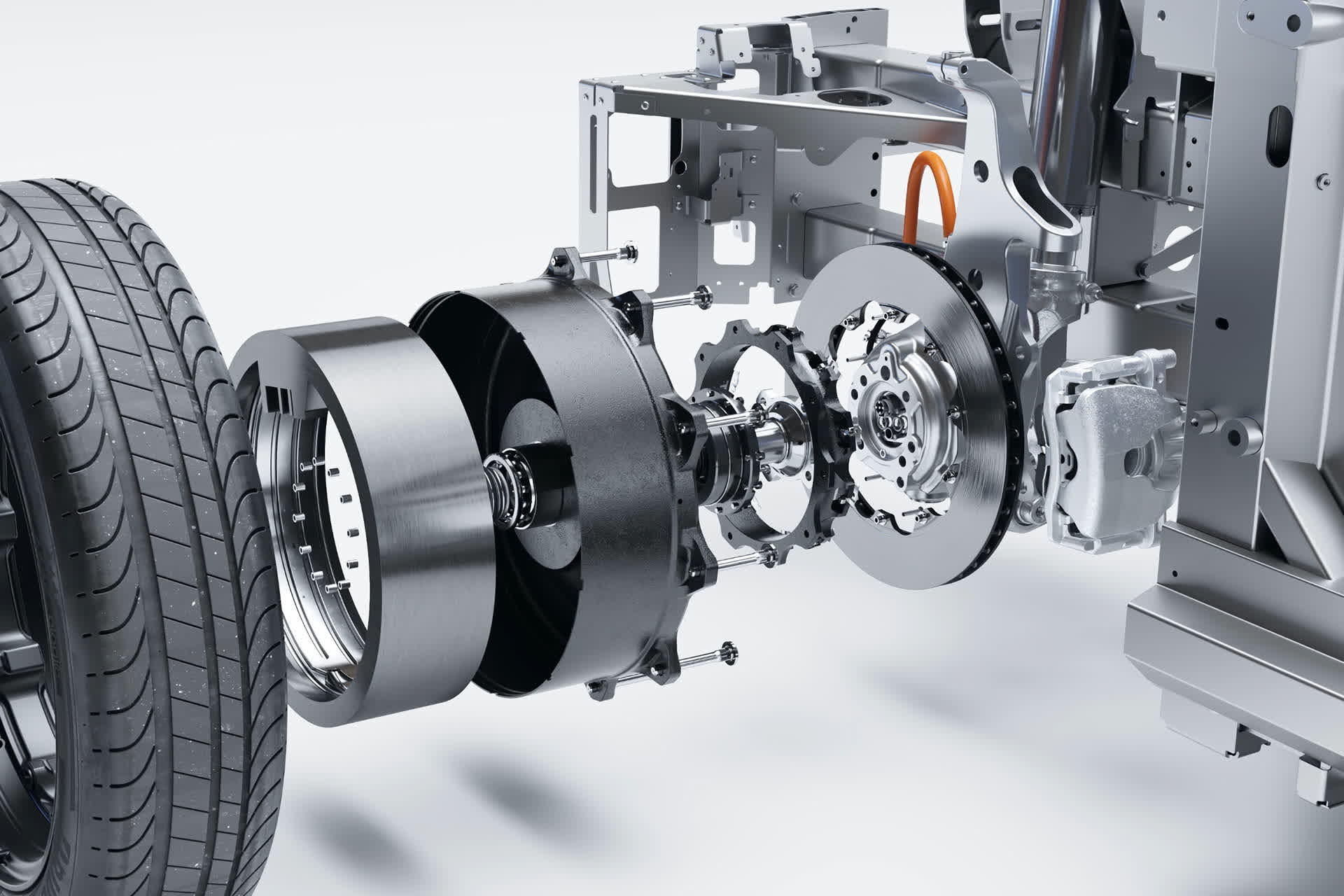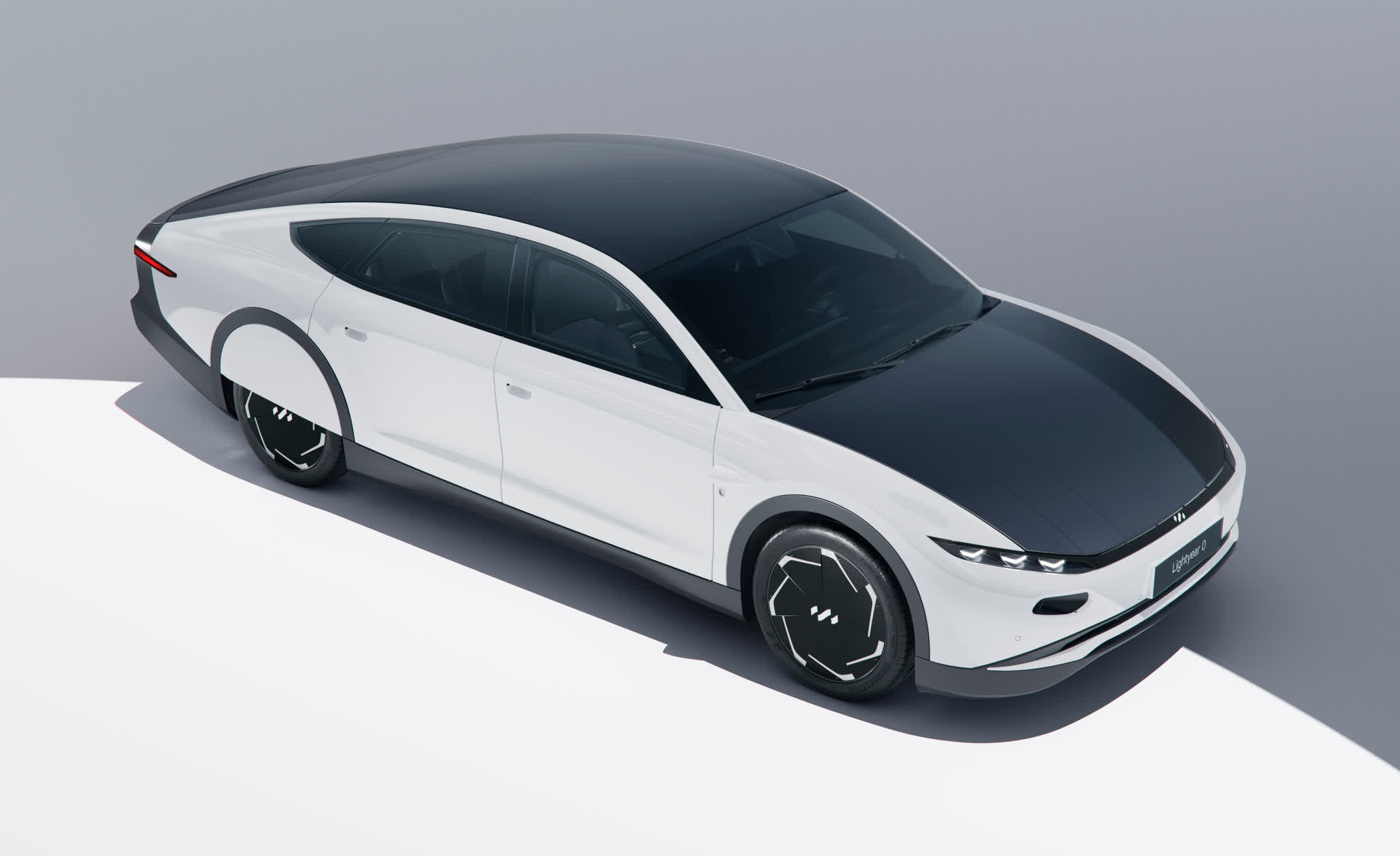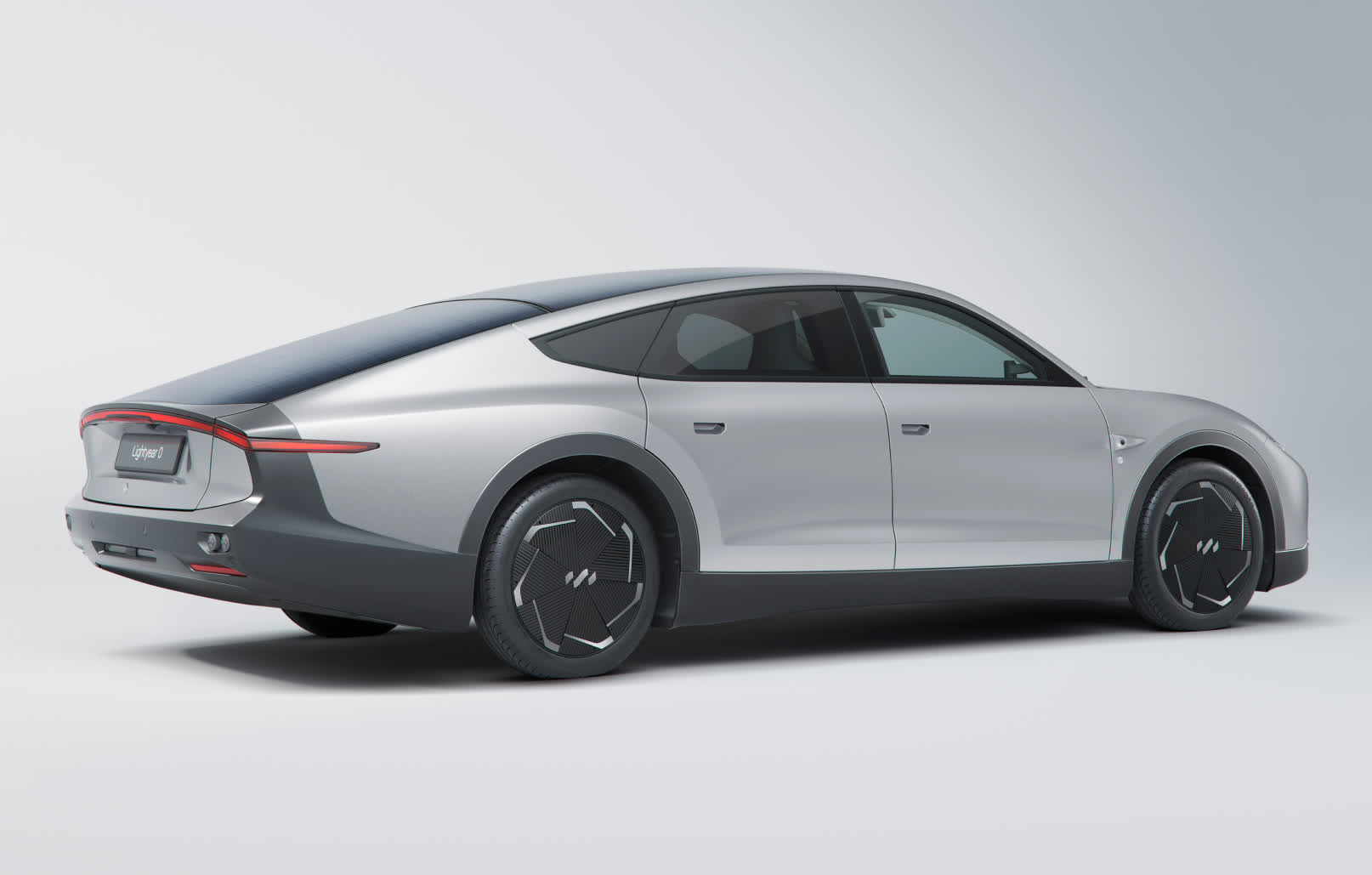Editor's take: EV startup Lightyear has unveiled what it is calling the world's first production-ready solar car. The Lightyear 0 is targeting a very niche buyer that values efficiency over performance and won't mind paying an arm and a leg for it. Will it sell? We shall see.
The Lightyear 0 is the product of six years of planning. We first learned of Lightyear in 2019 when it announced the Lightyear One, a $169,000 EV with integrated solar panels. That project is now known as Lightyear 0 and has evolved a bit since then (and is also a lot more expensive).
According to the company, the Lightyear 0 will have an estimated range of 388 miles thanks to its 60 kWh battery pack and four independently controlled in-wheel motors. Notably, the vehicle can only generate about 43 miles of range per day from its solar panels under best-case circumstances.

Don't expect typical EV performance here, either. The Lightyear 0 takes a whopping 10 seconds to hit 60 MPH from a stop and maxes out at a top speed of just 100 MPH. For comparison, a Tesla Model S Plaid can reach 60 MPH in under two seconds and has a top speed of 200 MPH. It's also significantly more affordable.
Then again, blistering performance isn't the name of the game here - efficiency is.
The Lightyear 0 tips the scales at just 3,472 pounds and has a record-breaking drag coefficient (Cd) of less than 0.19. Its body is constructed partially of reclaimed carbon fiber, and naturally sourced materials make up much of the interior.

Interested parties can order a Lightyear 0 over on the company's website, but be prepared to shell out a staggering 250,000 euros ($263,000) for the opportunity. The first cars will reach their owners in November, we're told.
